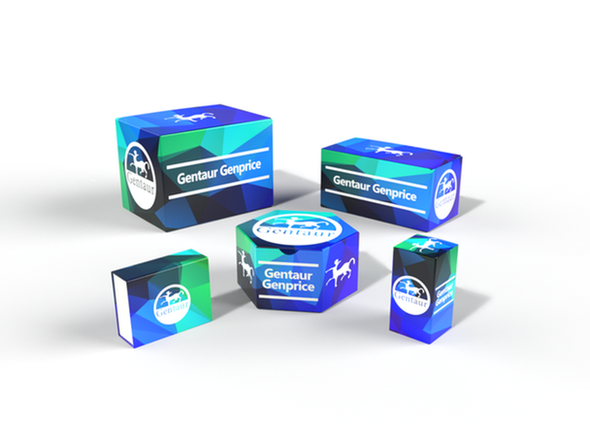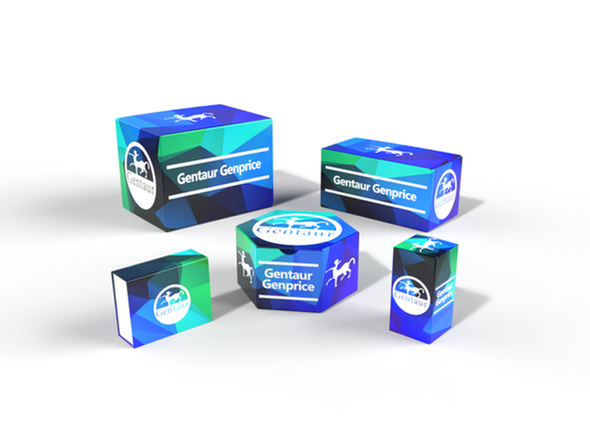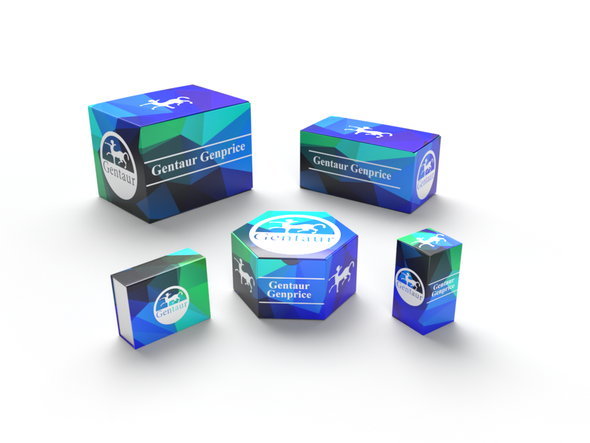749
Mouse Arginase-1 (ARG1) ELISA Kit | KTE71409
- SKU:
- 749-KTE71409
- Availability:
- Usually ships in 5 working days
Description
Mouse Arginase-1 (ARG1) ELISA Kit | KTE71409 | Gentaur UK, US & Europe Distribution
Application: This Mouse Arginase-1 (ARG1) ELISA Kit employs a two-site sandwich ELISA to quantitate ARG1 in samples. An antibody specific for ARG1 has been pre-coated onto a microplate. Standards and samples are pipetted into the wells and anyARG1 present is bound by the immobilized antibody. After removing any unbound substances, a biotin-conjugated antibody specific for ARG1 is added to the wells. After washing, Streptavidin conjugated Horseradish Peroxidase (HRP) is added to the wells. Following a wash to remove any unbound avidin-enzyme reagent, a substrate solution is added to the wells and color develops in proportion to the amount of ARG1 bound in the initial step. The color development is stopped and the intensity of the color is measured.
Detection Method: Colorimetric
Conjugate: N/A
Sample Type: Cell culture supernatants#Serum#Plasma#Other biological fluids
Assay Type: Multiple steps standard sandwich ELISA assay with a working time of 3-5 hours. It depends on the experience of the operation person.
Kit Component: • Mouse Arginase-1 microplate
• Mouse Arginase-1 standard
• Mouse Arginase-1 detect antibody
• Streptavidin-HRP
• Standard diluent
• Assay buffer
• HRP substrate
• Stop solution
• Wash buffer
• Plate covers
Features & Benefits: Mouse Arginase-1 (ARG1) ELISA Kit has high sensitivity and excellent specificity for detection of Mouse ARG1. No significant cross-reactivity or interference between Mouse ARG1 and analogues was observed.
Calibration Range: Please inquire
Limit Of Detection: Please inquire
Usage Note: • Do not mix components from different kit lots or use reagents beyond the kit expiration date.
• Allow all reagents to warm to room temperature for at least 30 minutes before opening.
• Pre-rinse the pipet tip with reagent, use fresh pipet tips for each sample, standard and reagent to avoid contamination.
• Unused wells must be kept desiccated at 4 °C in the sealed bag provided.
• Mix Thoroughly is very important for the result. It is recommended using low frequency oscillator or slight hand shaking every 10 minutes.
• It is recommended that all samples and standards be assayed in duplicate or triplicate.
Storage Instruction: The unopened kit should be stored at 2 - 8°C. After opening, please store refer to protocols.
Shipping: Gel pack with blue ice.
Precaution The product listed herein is for research use only and is not intended for use in human or clinical diagnosis. Suggested applications of our products are not recommendations to use our products in violation of any patent or as a license. We cannot be responsible for patent infringements or other violations that may occur with the use of this product.
Background: Arginase is the fifth and final step in the urea cycle, a series of biophysical reactions in mammals during which the body disposes of harmful ammonia. Specifically, arginase converts L-arginine into L-ornithine and urea. In most mammals, two isozymes of this enzyme exist; the first, Arginase I, functions in the urea cycle, and is located primarily in the cytoplasm of the liver. The second isozyme, Arginase II, has been implicated in the regulation of the arginine/ornithine concentrations in the cell. It is located in mitochondria of several tissues in the body, with most abundance in the kidney and prostate. It may be found at lower levels in macrophages, lactating mammary glands, and brain. The second isozyme may be found in the absence of other urea cycle enzymes. Arginase consists of three tetramers.
Alternative Names: ARG1; Arginase 1; liver-type arginase; type I arginase
Search name: ARG1; Arginase 1; liver-type arginase; type I arginase
Tag: ARG1










